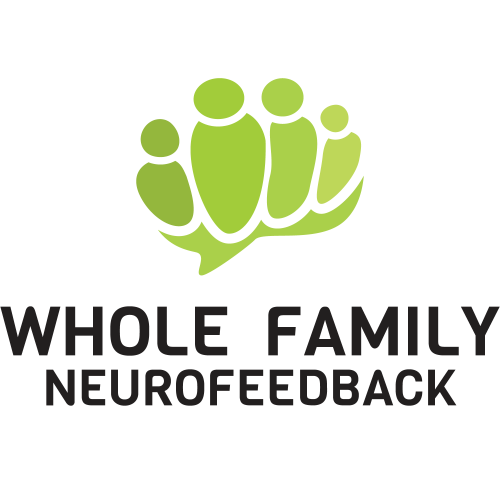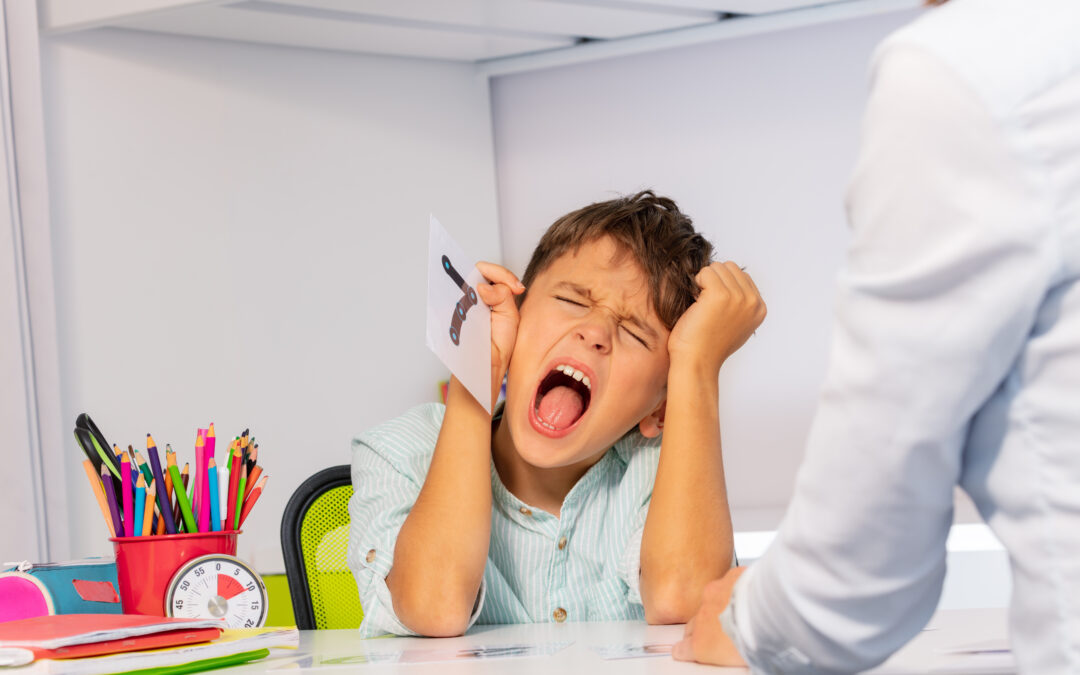How Neurofeedback Can Improve Emotional Regulation In Autism
As a parent, you know just one thing going wrong in your routine can spiral your child out of control.
Parenting in the early years can often feel like walking on eggshells – you never know what’s going to set your child off.
When you have a neurodiverse child this is amplified a thousand times.
Psychologists, educators, and mental health professionals advocate for early learning of emotional regulation skills. This is important for everyone’s development but it’s crucial for children living with Autism to learn emotional regulation skills
You want what’s best for your child. You want to give them the skills they need to be healthy and happy.
There are many things you can do to help teach your child emotional regulation skills and today we’ll dive into emotional regulation and how neurofeedback can help.
What is emotional regulation and why is it so important?
Emotional regulation is how you:
-
- Manage your emotional state
- Respond to emotional experiences
- Develop skills to minimize the intensity of emotions (when needed).1,2
Years ago, most people didn’t give much thought to emotional regulation and the impact it has on overall health. Over the last 30 years, researchers have studied how emotional regulation impacts mental, emotional, and physical health.
People who can regulate their emotions experience improvements in their:
- Mental and emotional health
- Physical health
- Relationships
- School and work performance
- Empathy and compassion for others
- Overall happiness2
Because it has a great impact on everyday life, everyone benefits from learning emotional regulation skills. People with Autism often need extra support in this area.
Emotional regulation and Autism
Autism Spectrum Disorder (ASD) is a lifelong neurological condition that creates challenges in communication and socialization and may include repetitive behaviors and/or sensory disturbances.
People with Autism also experience a very high rate of
- Attention Deficit Disorder (ADHD)
- Anxiety
- Obsessive Compulsive Disorder (OCD)
- Mood disorders3
It’s important to note that no two people living with Autism are the same.
Since Autism affects everyone differently (and many people are living with multiple conditions) it can be hard for people with ASD to regulate their emotions.
We’re not born with emotional regulation skills – they need to be learned and nurtured. Kids with Autism experience the world differently and can be easily frustrated trying to communicate, socialize and express their thoughts, feelings, and emotions.
In fact, kids with ASD are 12 times more likely to need psychiatric services for issues related to emotional regulation (anxiety, depression, aggression – even self-injury. 3
Teaching kids emotional regulation skills is crucial because it can decrease negative symptoms such as:
- Emotional outbursts/tantrums
- Aggressive behavior toward others
- Self-injury
- Social anxiety4
Teaching emotional regulation skills to a child with Autism requires a unique approach, tailoring the approach specifically to how the child best receives information.
Teaching emotional regulation skills to children with Autism may include:
- Identifying and teaching emotions
- Using words the child understands to communicate emotions
- Using pictures to help them identify and express emotions
- Modeling correct problem-solving/emotional regulation5
Please note that teaching emotional regulation skills to your child with Autism will depend on their social, emotional, and cognitive development. Since no two people with Autism are the same, no two ways of teaching emotional regulation should be the same. This means you’ll try different methods until you find what works best for your child.
One thing that’s becoming clear is that neurofeedback is one tool that seems to help all people, regardless of their developmental stage. Neurofeedback can be an additional tool alongside traditional methods to improve emotional regulation skills in kids with Autism.
Using neurofeedback for emotional regulation with Autism
Children with Autism often have a lot of support services, ranging from speech-language services to occupational therapy, behavior modifications, and psychological services. Many of these interventions address behavior modification but they don’t address emotional regulation at its core.3
If you’re new to neurofeedback there are two types – linear and non-linear. While both types can help emotional regulation, non-linear neurofeedback is the only professional grade neurofeedback that you can do on your own, without a practitioner, and without a medical diagnosis.
At-home neurofeedback can be crucial for kids who have difficulty meeting new people, who may not want to attend another appointment, or who may not have the focus to work with a practitioner during traditional, linear neurofeedback sessions.
If you do neurofeedback at home for your child, you’ll hook up sensors to their head and ears. Don’t worry if your child is sensitive to having sensors placed. Most of our clients are able to work through any discomfort or anxiety the sensors may bring.
Your child can sit back and listen to music or watch a movie during the session. When the device detects when the brain shifts in an uncomfortable way there’ll be a slight pause in the music. This pause allows the brain to self-correct.
The pause is so slight (most people don’t even notice) but it triggers a brain reflex called the orienting response. The orienting response is just a way for the brain to bring itself back to the present moment.
The central nervous system already works to detect differences and minimize discomfort so the neurofeedback machine is just helping the brain do this more efficiently by giving it information about itself.
After doing these at-home neurofeedback sessions, people experience significant shifts in their mental, emotional and physical functioning.
We’ll discuss the benefits soon but first, let’s quickly review a study that shows how Neuroptimal® helped children with Autism.
Using Neuroptimal® for emotional regulation improvement in Autism
Doug West, Director of Parent Driven Services completed a study with kids with ASD who did a minimum of ten Neuroptimal® neurofeedback sessions. During this study, he tracked anxiety, low frustration tolerance, and overall symptom improvement.
Each person reported symptom improvement with an average of 44.4% reduction in symptoms among the kids. The lowest percentage reported was a 15% improvement with the largest being a 78.5% improvement in symptoms!3
Let’s talk about why the kids in this study saw so many improvements.
Why Neuroptimal®
Neuroptimal® is the only at-home, professional-grade, neurofeedback device on the market. It’s safe, easy, and affordable. Its advanced technology makes it very easy to use and it can be done right in the comfort of your own home, which is great for kids.
Since Neuroptimal® works with the unconscious brain, the child doesn’t need to do anything – great for impulsive or easily distracted kids.
Neurofeedback optimizes brain performance which has enormous benefits in all aspects of life. For a child with Autism, when the brain is optimized it will influence other areas of their life – speech therapy, behavioral modifications, socialization, and even academic performance.3
Neuroptimal® is designated by the FDA as a general wellness product that can:
- Promote relaxation and healthy sleep habits
- Help manage stress
- Improve instruction following concentration, hand-eye coordination, pattern recognition, hand-eye coordination
- Help your child become flexible and resilient
- Enhance learning capacity
Neuroptimal is safe, easy to use, non-invasive, and has virtually no side effects.
Whole family improvement
Living with Autism is different for every family but there are unique (and often stressful) circumstances when you’re caring for a child with Autism.
You’re their emotional support person, their primary caregiver, and their advocate. Any help you can give your child with Autism helps the whole family.
As a therapist for almost 25 years, I understand that when one person is stressed in a family, everyone is stressed. Whole Family Neurofeedback was created to educate all families on the benefits of neurofeedback for everyone.
If you’re interested in learning more about Neuroptimal® and you want to join a community of parents committed to helping their families, join our Facebook group: Neurofeedback moms (Dads are welcome too!)
Here we support each other, and learn more about neurofeedback, and parenting.
In this group, you’ll get:’
- Support from other parents who have children with Autism
- Research-based information to help you make the best decisions for your family
- Live informational sessions with experts in the fields of neurofeedback, parenting, and family systems therapy
- Lifetime access to all live recordings to watch at your convenience
Join us today at Neurofeedback Moms, we can’t wait to see you inside the group!
If you’re interested in a copy of Doug West’s research study, email me at: miriam@wholefamilyneurofeedback.com or fill out the contact form anywhere on the website.
I’d love to get you the information you need to help you make the best decisions for your family.
Resources
- Emotional Regulation. Psychology Today.
- Emotional Regulation: What it is and why it’s important. 2016. Alvarado Parkway Institute Behavioral Health.
- West, Douglas, R. Improving Emotional Regulation Using Neuroptimal Training for ASD Youth. Parent Driven Autism Services. 2018. DRW Neuroperformance.
- How To Help Children With Autism Handle Their Emotions. LuxAi.
- Emotional Regulation Of Emotions In Autism: 5 Ways To Help. Autism Little Learners.

